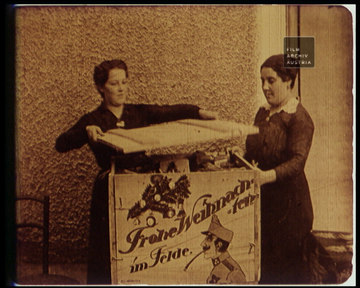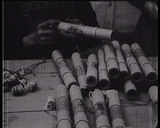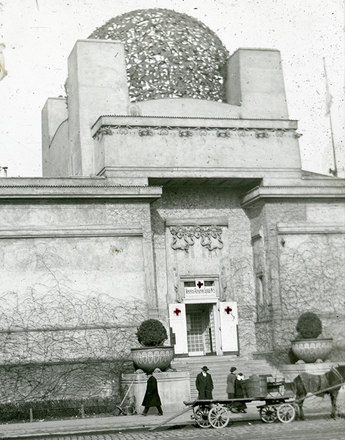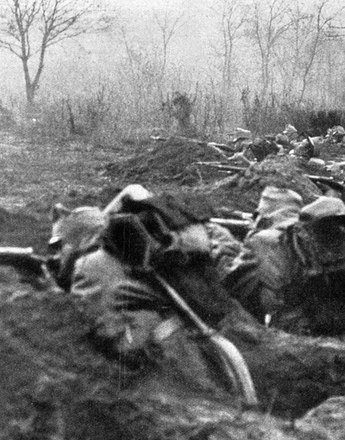The (film) heroines on the home front
The war economy demanded full commitment by everyone, and the civilian population, particularly women, were involved in the ‘total war’. They took over jobs that had been previously carried out by men, and their effort on the home front had a democratizing effect that changed social expectations with regard to the state.
The new role of women can be clearly seen in the industrial (promotion) films from 1916 and the shots of the Austro-Hungarian armaments industry – mostly short films. In the propaganda film Munitionsfabrik Hermann Weiffenbach Ges.m.b.H. Wien (A 1917) the war effort is emphasized by showing the skill and speed of the women workers as they sit at long benches performing ‘war work’. The camera sweeps over busy hands as the sequence of operations is depicted. The well-organized manufacture of flares and fuses is shown. The women are observed continuously – not only by the camera but also by the male supervisors walking up and down behind the women and checking over their shoulders.
The pictures reflect genuine attitudes. In spite of the loss of male workers on account of the war, companies often refused initially to employ women. The main reason for their refusal was that they were not subject to military discipline. The films from the Weiffenbach ammunition factory show that the increasing shortage of male personnel made it necessary to hire women, who were nevertheless strictly supervised. In Vienna the proportion of women in the workforce rose from 31 per cent in 1913 to 53 per cent in 1918. Over 50 per cent of the workers in the Manfred Weiss and Wöllersdorf ammunition factories were women, and in the Enzesfeld armaments factory they made up 45 per cent of the employees.
On the home front women also knitted and sewed for the soldiers in the field. At the start of the war tobacco and home-made Christmas trees could also be sent, as the film propaganda was at pains to show (Christmas Presents for Allied Troops, A/D 1915). Resources soon ran out, however. Nettles were collected for clothing production, and inner soles for shoes to protect from damp were made from newsprint.
Translation: Nick Somers
Hanisch, Ernst: Der lange Schatten des Staates. Österreichische Gesellschaftspolitik im 20. Jahrhundert, Wien 1994
Wegs, Robert J.: Die österreichische Kriegswirtschaft 1914–1918, Wien 1979









